
General Health Blog
Prostate Enlargement: All You Need to Know About It
Prostate
Prostate enlargement also called Benign Prostatic Hyperplasia (BPH) is a condition where by the cells of the prostate gland multiplies and enlarges the prostate. This enlargement causes the prostate gland to squeeze the urethra making it difficult to urinate.
Since we are talking about prostate enlargement, what exactly is the prostate? The prostate is a part of the male reproductive system. It is a small gland, shaped like a walnut. The prostate surrounds the urethra. (The urethra is the passage through which semen and urine flows out of your body). It surrounds the urethra at about the area where the urethra meets the bladder.
The prostate‘s main function is to make most of the fluid that makes up the semen. This fluid is necessary for the fertility of a man. It is the contraction of the prostate that helps propel the fluid and semen through and out of the penis during orgasm.
When the cells of the prostate starts to multiply, the resultant enlargement squeezes the urethra. This pressure on the urethra starts to affect the urine flow causing it to come out in tickles and drips or not at all. Over time the bladder wall may become thicker. Eventually this weakens the bladder wall and the bladder may no longer be able to empty itself completely.

BPH and Prostate Cancer
Both of these conditions cause the prostate to swell, but BPH is benign does not spread, but canser spreads. Statistics on men in their fifties shows that 1 out of 2 men may be diagnosed for BPH, while 1 out of 7 may be diagnosed for cancer.
Causes of Prostate Enlargement (BPH)
Apart from prostate enlargement being common among aged men, the actual cause of it is not quite know. However, there are theories as to how it happens.
Researchers found out that among males who had their testicles removed before they reached puberty, BPH or prostate enlargement did not develop. Therefore, researchers say their might be a relationship between prostate enlargement and the aging of the testicles.
The next theory also involves the testicles. The testicles produces not only testosterone in males, but also 20% of the estrogen found in men. Other organs like the brain also produces estrogen. As a man ages, the amount of testosterone in the blood decrease, leaving a higher percentage of estrogen. Scientist have suggested that perhaps the presence of more estrogen in the prostate may be favourable to the multiplication of the cells in the prostate.


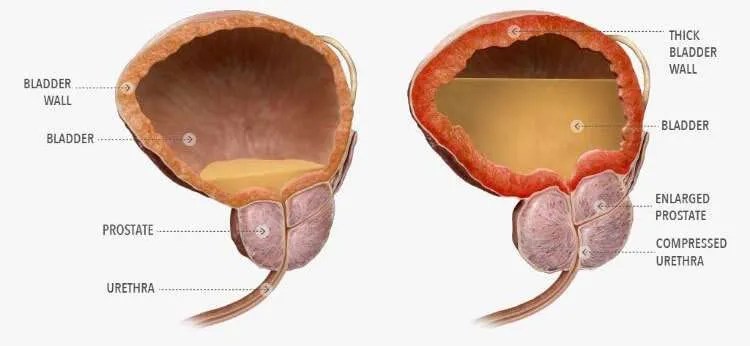

Risk Factor for Prostate Enlargement
Males who have the following factors are likely at risk of developing an enlarged prostate:
- Men aged 40 and older
- Obese Men or men with other medical conditions like type 2 diabetes and heart diseases.
- Males with erectile dysfunction
- Lack of physical exercises.
- Family history of enlarged prostate.
Symptoms of Prostate Enlargement
Not every man who develops prostate enlargement show symptoms or eventually need treatment. The symptoms usually develop as a result of a blocked urethra or the weakening of the bladder wall because the bladder has been over worked.
Surprisingly, you may discover that the size of the enlargement does not necessarily mean there will be health challenges or symptoms. Some greatly enlarged prostates don’t develop symptoms while some with little enlargement of the prostate do.
Some of the symptoms of Prostate enlargement may include:
- Frequent need to urinate
- Weak urine stream. It starts then stops, then starts.
- Difficulty in starting to urinate
- Waking up to urinate frequently (Nocturia)
- Dribbling at the end of urination
- Developing urinary tract infections although this is less common.
- Blood in urine
- Painful ejaculations or pains while urinating.
- Unusual smell or colour of urine
- Inability to delay urine.


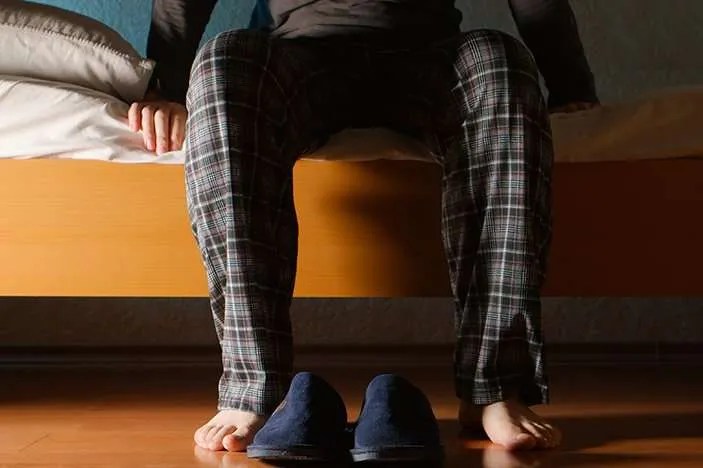

Sometimes other complications may arise as a result of an Enlarged Prostate such as: Bladder damage and bladder stones, kidney damage, acute urinary retention, chronic urinary retention.
Diagnosis of Prostate Enlargement
A Doctor diagnoses prostate enlargement based on
Personal and Family History
People with a family history of prostate enlargement are at risk of developing it, so knowing the personal and family history of a patient is a way to help diagnose the issue. The doctor or health care personnel may ask a couple of questions. Questions like;
- What symptoms are you experiencing?
- The time you first started noticing these symptoms?
- Even you general medical history?
The International Prostate Symptom Score (IPSS)
The International Prostate Symptom Score (IPSS) is also a common method for screening and diagnosing BPH. IPSS is a survey that asks seven urinary symptom questions, which are scored from 0-3. The questions are based on how often they happen to you in the past year or two – with zero being never and 3 always happening. One quality of life question helps determine severity of your condition by taking into consideration things like power loss due it, trouble sleeping etcetera. These questions take into consideration:
- Incomplete Emptying
- Frequent need to go
- Intermittent Stream
- Urgent need to find a restroom
- Weak Stream
- Straining
- Waking up at night to go
- Quality of Life
Doctors may recommend “Watchful Waiting” for mild problems with an enlarged prostate gland. If you’re not experiencing any symptoms and your IPSS scores are low (less than 8), then it’s possible that monitoring may be all there needs to do in order keep this condition under control over time
Physical Examination
Physical exams usually involves checking the patient’s body for signs such as; discharges from the urethra the size or tenderness of the scrotum.
A rectal exam is sometimes performed as a part of a routine test for males over the age of 40. The Doctor asks the man to either bend over or lie down on his side while holding his knees to his chest. The doctor now slides a gloved lubricated finger into the rectum of the patient. Since the prostate lies next to the rectum, the doctor can feel for discomforts or abnormalities on the prostate.


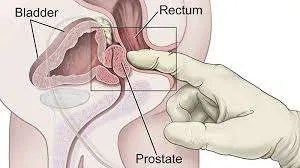

Medical Test
Medical test carried out by a urologist may include:
Urinalysis
A sample of urine is collected from the patient, and a strip of chemically treated paper (a Dipstick) is place into the urine. The presence of any infection in the urine sample will bring about a change in colour on the patches of the dipstick.
PSA Blood test
The Prostate cells create a protein call PSA (Prostate specific Antigen). But, the challenge here is that the presence of high levels of PSA in the blood could indicate the development of prostate enlargement or the presence of prostate cancer. Or simply aging or inflammation.
Urodynamic tests
Urodynamic tests are a series of test carried out to see the bladder’s ability to hold urine and totally empty itself. It involves uroflowmetry to determine how rapidly the bladder releases urine. Then post void measurement which determines the amount of urine remaining after urination. And reduced urine flow which indicates the presence of blockages as a result of prostate enlargement.
Cystoscopy
A urologist may use a cystoscope which is a tube-like instrument to look inside the urethra and bladder of a patient.The cyctoscope is inserted through the tip of the penis into the urethra. The urologist then looks for blockages or stones in the urinary tract.
Trans-rectal ultrasound
The trans-rectal ultrasound uses a device called a transducer. The transducer is about the size of a pen. A specially trained technician runs then test and its giving to a doctor to interpret. The transducer is inserted into the rectum of the patient. Using sound waves bounced of the organs, the transducer creates an image that shows the size of the prostate and any abnormalities.
Biopsy
A biopsy may not only show that a prostate is enlarged, but also if a man has prostate cancer. Using an ultrasound or an MRI (Magnetic Resonance Imaging), a biopsy needle may be guided to the prostate to get a tissue sample for analysis.
Treatment of prostate Enlargement
Lifestyle changes and self-care are key in treating BPH. If you don’t see any improvement in your symptoms after a few months of treatment, it may be time for something more. Surgery might also become necessary for some people who have had trouble finding relief from other treatments.
Natural Herbal remedies
A number of herbal supplements have been known to help with enlarged prostates. The American Botanical Council registers various natural herbal or plant extracts as a treatment for Prostate Enlargement and these ingredients are now made available.
Many clinical trials, they have been proven effective in treating this disorder. One such being the formula from BF Suma called “Prostatrelax.” It contains over 37 years’ worth research into how to help men who suffer from prostate problems at home without medication.
Click Here To Order ProstatRelax Online
Lifestyle Changes
For cases with mild symptoms, lifestyles changes could help relieve or reverse the situation. Lifestyle changes can include;
- Reduction in intake of liquids, usually before bed or before leaving the house.
- Avoid caffeinated beverages and alcohol
- Avoid certain kinds of medications like diuretic, antidepressants decongestants and antihistamines.
- Exercising, especially doing exercises that affect the pelvic region.
- Avoid constipation.
- And training the bladder so it retains urine longer.




Medications
A doctor may prescribe medications that stop the growth of prostate and reduce symptoms associated with BPH. Some common treatments for this condition include 5-alpha reductase inhibitors, alpha blockers, phosphodiesterase5 (PDE) inhibitor drugs.
Alpha blockers
Alpha blockers are a type of medication that relaxes the smooth muscle tissue in your prostate and bladder neck. This can help improve urine flow, reduce blockages by relaxing those muscles. which then allows you to go longer without having any issues with urination.
Phosphodiesterase-5 inhibitors
Urologists prescribe these medications mainly for erectile dysfunction. This class of medication can reduce lower urinary tract symptoms by relaxing muscles in the lower urethra, allowing for easier passage of urine without obstruction or pressure buildup that causes urgency.
Researchers are working on determining how long-term use eases up issues associated with enlarged prostate glands.
5-alpha reductase inhibitors
5-alpha reductase inhibitors are a class of medications that block the production of Dihydrotestosterone DHT, which accumulates in men with an enlarged prostate and can cause it to grow. They may work more slowly than alpha blockers but still help prevent progression.
Combining medications
Combining medications can be a great way to get better results. A recent study, the Medical Therapy of Prostatic Symptoms (MTOPS) found that when patients took two classes instead of just one their symptoms decreased by over 50%. A urologist may prescribe a combination of alpha blockers and antimuscarinics for patients with overactive bladder symptoms.
Side effects are not just a rare occurrence with medications, but can be serious. Such as chest pain, hives, blurred vision, erectile dysfunction or even painful erection of the penis that lasts for hours
Surgery
When medications don’t work, there are a number of surgical procedures that may be helpful in treating Benign Prostate Hyperplasia. Some types fall into one or more categories:
- Noninvasive or Minimally Invasive (Out Patient)
- Invasive (In Patient)
Noninvasive or Minimally Invasive Surgeries
Minimally invasive surgery is a great option for those who want quicker recoveries and less pain. Instead of opening up large areas on your body with big tools, the surgeon uses tiny ones so they can perform operations without cutting too much skin or muscle. Such as;
TUMT (Transurethral microwave thermotherapy)
TUMT (transurethral microwave thermotherapy) is a safe and effective treatment for mild to moderate blockages. Radio-frequency waves heat portions within the prostate, destroying select tissue with minimal risk of injury because it requires no cutting or removal of any organs. A cooling system protects against damage that could occur during medical procedures like these heated ones!
TUNA Ttransurethral radio frequency needle ablation)
TUNA (transurethral radio frequency needle ablation) is a treatment option for many patients with prostate issues. The procedure also destroys tissue and improves urine flow, relieving symptoms of the condition.TUNA procedure involves heating the prostate with RF needles. This causes coagulation necrosis, which results in shrinkage of enlarged tissue deposit within your body. Side effects can include painful urination or an urgent need to urinate. However these will only last a few weeks after your surgery date.
WIT (Water-induced thermotherapy)
WIT (Water-induced thermotherapy) is an outpatient procedure that uses heated water to melt away the tissue in your prostate and reopen up blocked urethra.
HIFU (High-intensity focused ultrasonography)
HIFU is a prostate enlargement treatment that uses the energy of highly focused ultrasound to pinpoint, heat and kill excessive cells. Unlike radiation or surgery it’s non-invasive (no incisions) outpatient procedure which leaves healthy tissue unharmed.
Prostatic stent insertion
Prostatic stent insertion is a procedure that involves a urologist inserting the small device called prostatic stainless steel through your pee hole and into narrowed area of enlarged prostate, it expands like an inflating balloon to push back against tissue causing widening in urination flow.
Rezūm (Transurethral water vapor therapy)
Rezūm (Transurethral water vapor therapy) is a treatment that uses Water vapor to destroy excess prostate tissue.
Urolift.
This is a procedure where the enlarged prostate is surgically lifted with the help of implants so that it doesn’t block the urethra.
Urolift and Rezūm are both effective at treating most cases of enlarged prostate, with benefits that include being less invasive than surgery. They also allow patients the potential for preserving sexual functionality in some circumstances while still providing relief from symptoms like pain or difficulty passing urine on their own.
Invasive Surgeries
Invasive surgery is a medical procedure that enters the body, usually by cutting or puncturing larger sections of the skin. This is used where other procedures are not option. Some of them are;
TURP (Transurethral resection of the prostate)
TURP is the gold standard for treating blockage of the urethra. A resectoscope, which looks like a giant examining instrument with an open end, is inserted through the penis and into the prostate gland to cut away at enlarged tissue that blocks any urine from flowing out properly.
TUIP (Transurethral incision of the prostate)
A TUIP is a surgical procedure to widen the urethra. During this surgery, an instrument that uses electricity or laser light will be inserted into the penis and then slowly cut away at some tissue until they reach prostate gland. It’s believed by many doctors to be better than traditional approaches like.
Laser Surgery
Laser surgery is a faster, less invasive alternative to TURP and TUIP. The doctor will use their cystoscope-a tool that looks like an insertion device with small lenses on it for viewing inside urethras to pass through your urine stream into your enlarged prostate gland so they can destroy any fatty tissues lining its walls using high energy lasers. People usually prefer laser surgery because there’s little risk involved in bleeding afterwards; however this type isn’t always effective against greatly enlarged prostates.
Simple Prostatectomy
Simple prostatectomy involves making an incision through the lower abdomen, sometimes the incision is made between the rectum and the base of the penis. Parts or the whole prostate may then be removed. This type of surgery usually require a long recovery time in the hospital.
Complications
Whichever surgery you choose to undergo minimal or invasive, you must know there could be complications after surgery. Complications such as
- After Surgery men sometimes experience problems urinating.
- They may experience urinary incontinence.
- Blood and blood clots in urine.
- Scar tissue: A year down the line, scar tissues may form that may also need surgery.
- Sexual dysfunction: Sometimes after surgery, some men experience temporary sexual dysfunction.
- Recurring problems such as urinary retention and UTIs may come up from time to time.
So be sure to discuss your options with your doctor before choosing.
Summary
Prostate health is important to maintain, but it doesn’t always require medical treatment. Sometimes your doctor will want you to have regular checkups in order for him or her to monitor the size of prostate.
When symptoms are affecting your quality life a couple of options may help with these issues: Natural and herbal supplements, lifestyle changes like dieting/exercise regimen, medication and surgery both minimal and invasive.




Click Here To Visit HEALTH-PLANET Natural Solutions Online Store

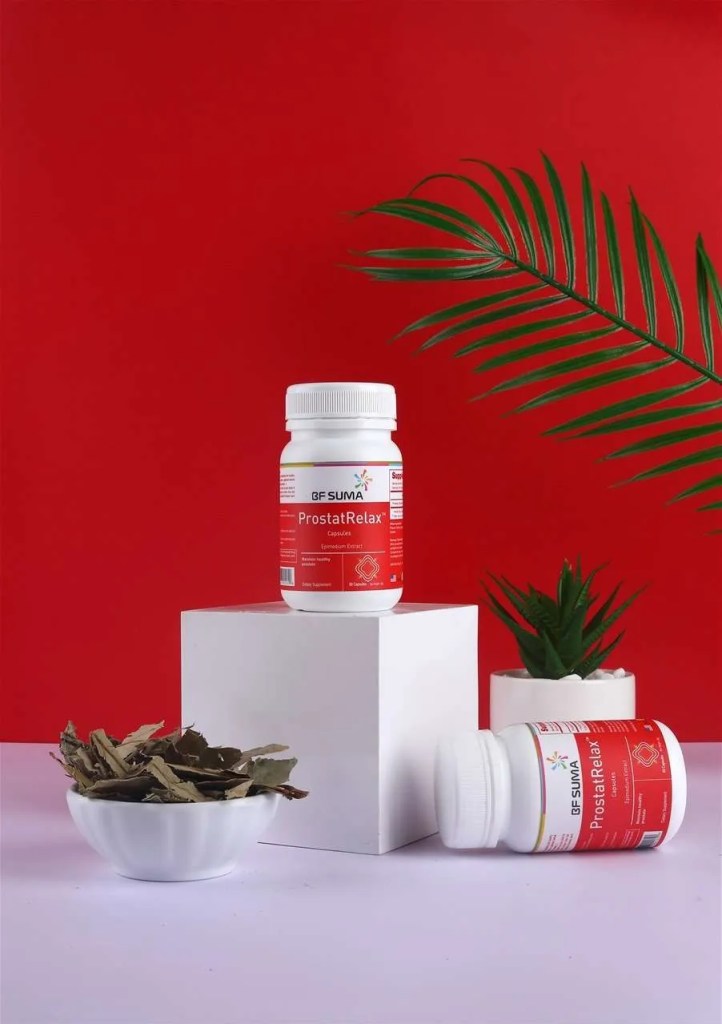

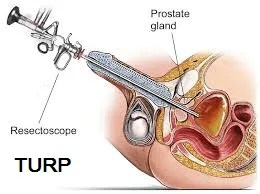


Leave a Reply
You must be logged in to post a comment.